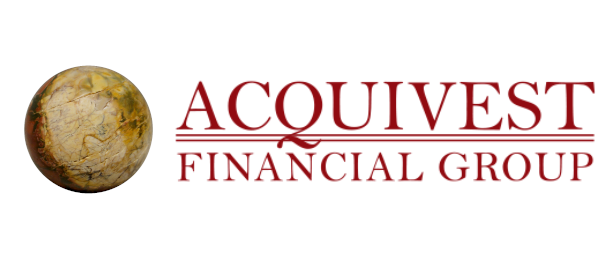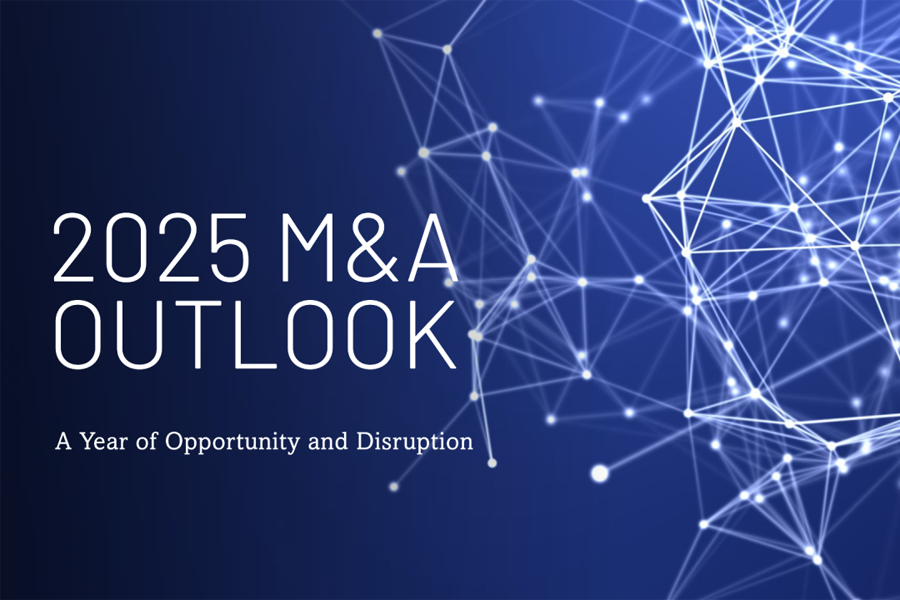Garren Work, MBA
VP, Mergers & Acquisitions Advisor for Businesses <$100MM
Click here to view original article
The M&A landscape for 2025 is set for a dynamic year. A mix of economic shifts, demographic trends, and technological advancements are shaping both the supply and demand sides of dealmaking. Lower interest rates, growing buyer confidence, and the continued rise of search funds are fueling acquisition activity. Meanwhile, aging business owners, post-COVID financial stability, policy changes and AI disruption are pushing more sellers to the table. Here’s what to expect in the coming year.
Interest rates falling
Lower interest rates reduce borrowing costs, which should drive increased buyer activity in the M&A market. The last 6 months have seen a full point drop, but the M&A markets may need some time for that to see an impact. Bankrate forecasts an additional 100-basis point decline this year.
Demand Impact: Falling interest rates should continue to stimulate buyer activity, bringing more demand, however this can impact M&A in waves as Buyers may hold out for another drop.
Positive Economic Outlook
Goldman Sachs projects 2.5% growth in the US economy, keeping pace with the global economy. RealClearMarkets polling for Economic Optimism reached 40-month high at the end of 2024. During his inauguration, the President called this 'the beginning of a Golden Age,' signaling optimism and confidence. Lastly, in a very unscientific poll I conducted on LinkedIn, 75% responded optimistically.
M&A Impact: Owners may see this and choose to hold on for another year and capture growth. Economic optimism should influence buyers’ tolerance for risk in deals to acquire. Overall impact favors a net increase in demand but heavily favors proven growth and/or clear growth opportunities.
Rise of Searchers
Search Funds, Independent Sponsors, or just Searchers have led to a rise of buyer activity. Firmex asks “Are we entering the age of the search fund?” – to which I think the answer is yes. There is a whole marketplace of service providers targeting Searchers including banks providing buyer pre-qualification letters, bootcamps and other training courses, referral marketplaces for advisors, and especially with equity groups preferring to invest in searchers than originate their own deals.
M&A Impact: Since searchers generally require “bankable” deals, the need for Exit Readiness will likely increase. Since most Searchers are raising capital the need to have high-quality financials that can withstand a QoE report is increased.
Aging Business Owners
The SBA estimates approximately 52.3% of small businesses are owned by individuals 55 and older. A decade ago, this number was approximately 44.7%, and two decades ago, the number was approximately 33.6%. Interestingly, in the last couple years, that number has stayed steady, right around 52.3%. We’d expect to see that number drop over the next few years, but that means an influx of opportunities available.
Supply Impact: In 2025, I expect this % to drop for the first time in two decades, which means a wave of new Sellers.
Post-Covid Stability
Covid created long-lasting challenges in M&A as Dealmakers scrambled to try to analyze historic trends related to covid-related variability. Many businesses faced high variability during shutdowns in 2020, supply chain issues in 2021, inflation in 2022, or labor shortages in 2023. While Buyers have been willing (or maybe required) to overlook covid-related impacts, it does take a bit of additional due diligence to uncover the size, scope, and severity of these various impacts to determine the “new normal”. Since most businesses faced these various challenges at some point, 2025 could be the first year with a solid 2-3 years of post-COVID data, allowing for more reliable trend analysis. Sellers may have been holding out for this, knowing this steady history is required for Top Dollar.
Dealmaking Impact: A longer history of stable financial performance should reduce the time it takes to close on a deal as deal-terms related to covid variability pass. 2025 will see this average time to from listing to close start to drop, reversing the frustrating trend.
Policy Changes
The new administration comes with lots of expectations for change. Two major topics are tariffs and immigration. Tariffs may have an impact on financials that need to be considered on a case-by-case basis, but long-term should benefit manufacturers based in the US. Immigration policy change will have an tightening impact on the labor market.
Dealmaking Impact: Buyers will likely want to explore areas of impact from changes expected from these policy shifts. For example: suppliers may face higher scrutiny as buyers fear the risk of impact from tariffs driving up costs. Also, buyers may place heavier emphasis on fully-staffed businesses. Prospective Sellers should consider impacts on their business, make changes to mitigate any risk to themselves, and be comfortable discussing the potential impact from these policy changes.
AI Disruption
The World Economic Forum predicts “If 2023 was about experimenting with AI, and 2024 was about adopting AI, 2025 will be the year when companies prepare for a level of functional change in how we work with AI that is likely to feel disruptive.”
Businesses that integrate AI effectively will gain a significant edge. While adoption may require trial and error, those who succeed will set a new competitive standard. Dealmaking itself will see an impact from AI – everything from data mining, financial analysis, creating marketing materials, lead-generation and legal-review can benefit from AI implementation.
M&A Impact: We get bombarded daily with AI-generated lead generation groups. Business Owners should be aware of these solicitations and identify the real interest from the fake. AI integration will impact all aspects of dealmaking.
Bonus Business Impact: If you are a business owner dismissing the impact from AI implementation, you should consider planning your exit. It will take time to materialize, maybe years, but it may be impossible to catch up with competitors who find a successful formula.
With both buyers and sellers adjusting to these evolving conditions, 2025 presents significant opportunities for those who are prepared. Whether you're looking to acquire or exit, understanding these trends will be key to maximizing value. A unique window for Dealmaking has started to open.

